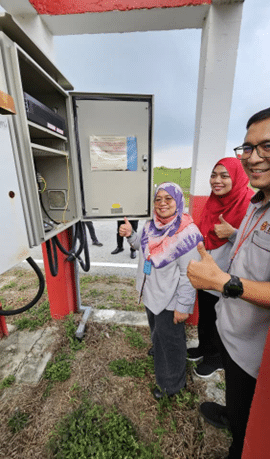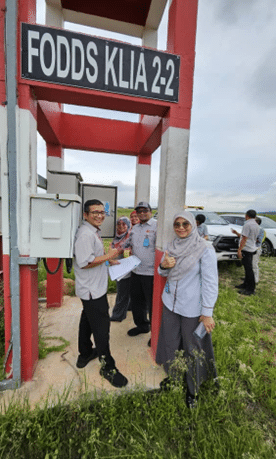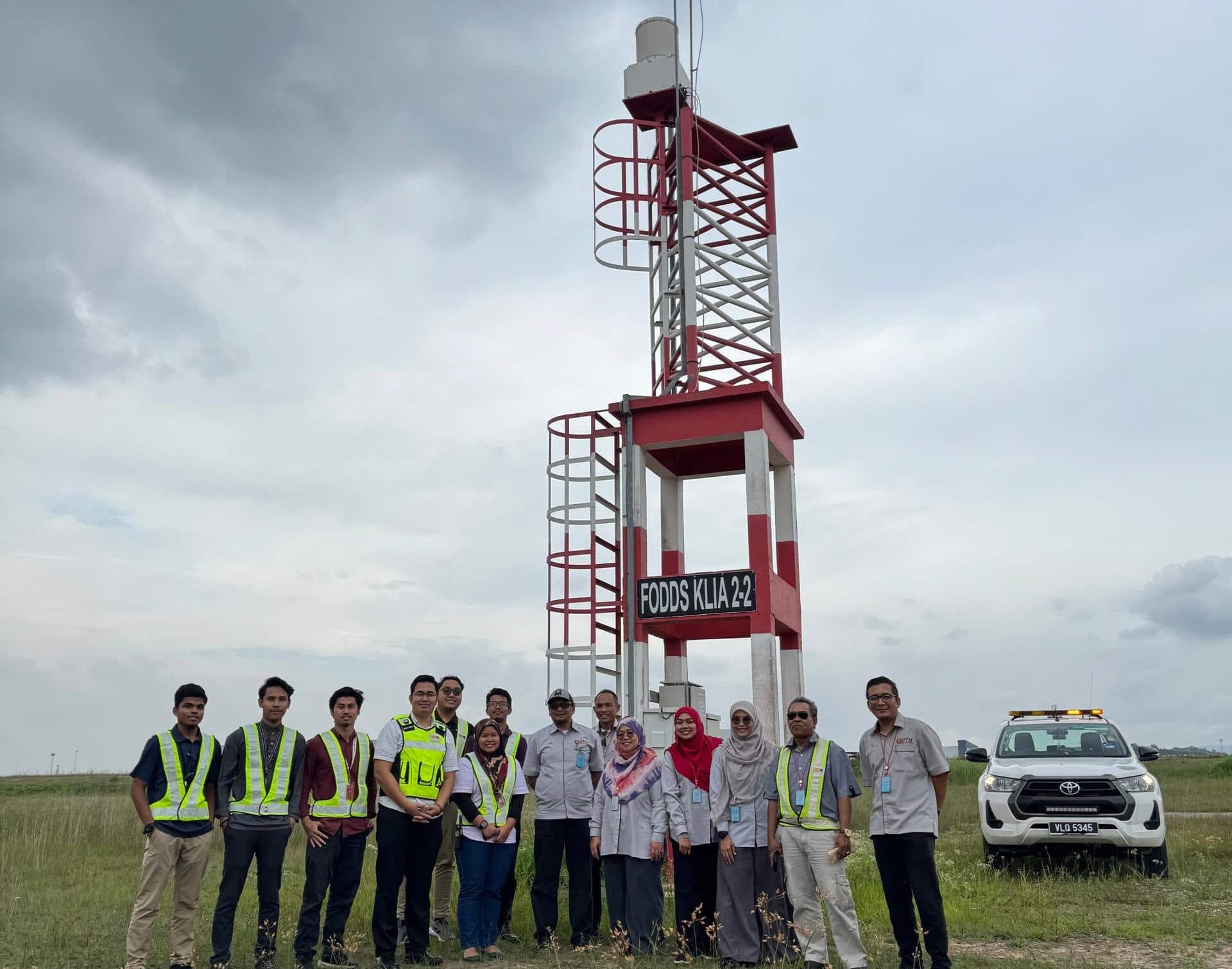KUALA LUMPUR, Jan 24 – A team from Universiti Teknologi Malaysia (UTM) conducted a site visit and verification process for the registration of fixed assets related to the Foreign Object Debris Detection System (FODDS) project at Runway 2, Kuala Lumpur International Airport (KLIA). This visit aimed to verify and register FODDS equipment as part of UTM’s ongoing commitment to technological advancements in aviation safety. The system, designed to enhance runway safety by detecting foreign objects that could pose hazards to aircraft operations, represents a significant step in UTM’s research collaboration with industry stakeholders.
Advancing Aviation Safety Through International Collaboration
The FODDS project is the result of an international collaboration between UTM, the Ministry of Internal Affairs and Communications of Japan (MIC Japan), the National Institute of Information and Communications Technology (NICT) Japan, Waseda University, and Malaysia Airports (Sepang) Sdn. Bhd. The project fosters industry-academia-government collaboration, advancing aviation safety technologies and facilitating knowledge exchange in the field of linear-cell radar systems.
The collaboration began with meetings and site visits by UTM and NICT on 6 March 2017, followed by the 1st Executive Workshop on FODDS on 3 May 2017, held in conjunction with the Japan Wireless Technology Exhibition 2017. The HiKE-UTM-MA(S) Memorandum of Collaboration (MoC) was officially signed on 10 January 2018 at KLIA, marking a formal commitment to research and development.
Innovative Radar System for Runway Surveillance
The FODDS system at KLIA utilizes a Radio Over Fiber (RoF) linear-cell radar system, designed specifically for runway surveillance. Operating at 96GHz frequency, it ensures minimal interference with airport communication and navigation systems. The field trial, conducted at Runway 2, KLIA, involved Remote Antenna Unit (RAU) installations adhering to airport layout constraints, including obstacle limitation surfaces and clearance zones. The RAUs were installed 165m from the runway centerline and 47.5m from the taxiway centerline for maximum safety and efficiency. Geo-Eye1 satellite imagery with 20cm accuracy was used for precise RAU placement, and the system was seamlessly integrated into KLIA’s existing telecommunications infrastructure for real-time data transmission and monitoring.
Cutting-Edge Equipment and System Features
The FODDS system at KLIA comprises several critical components, including seven radar antenna units, an HD camera with an integrated head, seven HD camera and radar interlocking devices, a control center unit, and a monitoring center. The radar antenna units, each valued at USD 230,000, are model ESF-R11C/FT with serial numbers G00059501, G00059502, G00059503, G00059505, G00059506, G00059504, and HIKE 002. The HD camera, model HC-HD250A-H2, has a serial number 9300080 and is valued at USD 70,000.
The system also includes seven HD camera and radar interlocking devices (PSB-MA01) worth USD 245,000, with serial numbers HIKE003, HIKE011, HIKE012, HIKE013, HIKE014, HIKE015, and HIKE016. The control center unit, model ESF-R11CR/CC, is equipped with detection result processing equipment supporting seven RAUs and one HDC, along with a control platform unit, amounting to USD 700,000. The monitoring center (MCS-FOD-01A), valued at USD 535,000, comprises a radar display device, camera display units, and FODDS software and platform, with serial number HKL23001. The total value of the FODDS system at KLIA is USD 3,160,000.
Enhancing Airport Safety with Advanced Detection Capabilities
The FODDS system is designed to detect foreign objects as small as 1-inch bolts from 500 meters away and identify birds and small animals at 200 meters. Integrated high-resolution cameras automatically focus on detected objects, capturing images and generating real-time alerts for airport personnel. Each detection is recorded with latitude and longitude coordinates, photographic evidence, and time-stamped logs, ensuring quick response and debris removal. The centralized FOD-LOG database stores all data for ongoing monitoring and analysis.
Regulatory Approvals and Future Developments
To facilitate the system’s deployment, UTM secured approvals from regulatory bodies, including the Malaysian Communications and Multimedia Commission (MCMC) for temporary Apparatus Assignment (AA) of the necessary frequency spectrum. The HiKE-UTM-MA(S) agreements, including the Collaborative Research Agreement (CRA) and Collaborative Project Agreement (CPA), continue to guide further advancements in the system.
UTM Delegation and Appreciation


The UTM delegation for the site visit included Prof. Ir. Dr. Sevia Mahdaliza Idrus, Assoc. Prof. Ts. Ir. Dr. Azura Hamzah, Assoc. Prof. Ts. Ir. Dr. Sumiaty Ambran, Mohd Afiq Anuar (Assistant Accountant), Zaidi Abd Rani (Administration Assistant), and Ismail Mohd Sarif (Administration Assistant). UTM extends its gratitude to all stakeholders for their support in this project.
Source: UTM NewsHub
